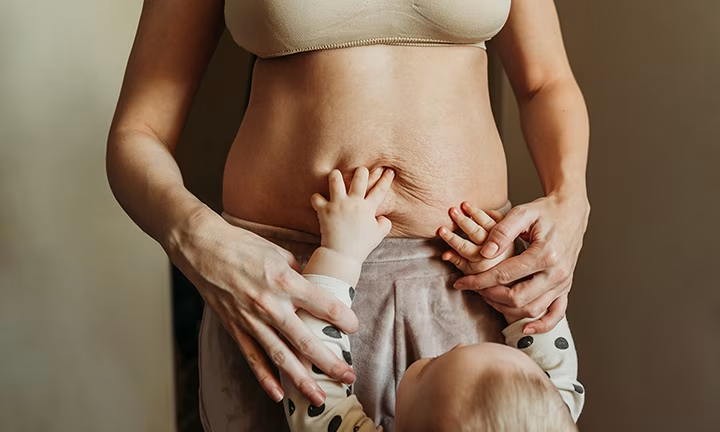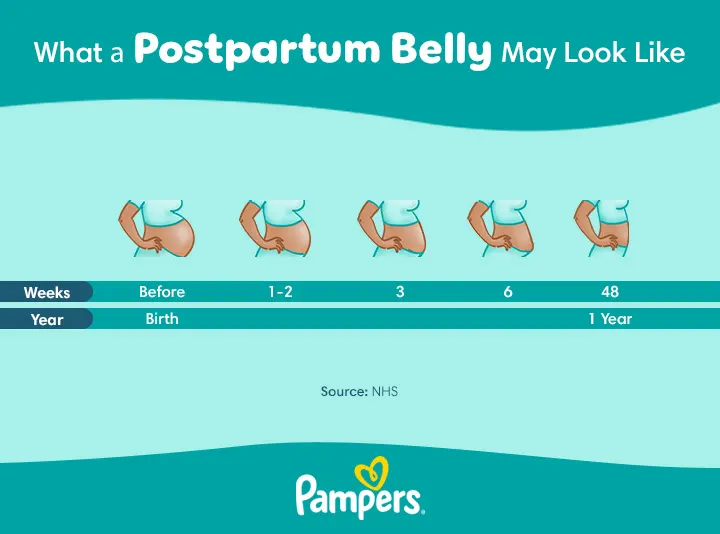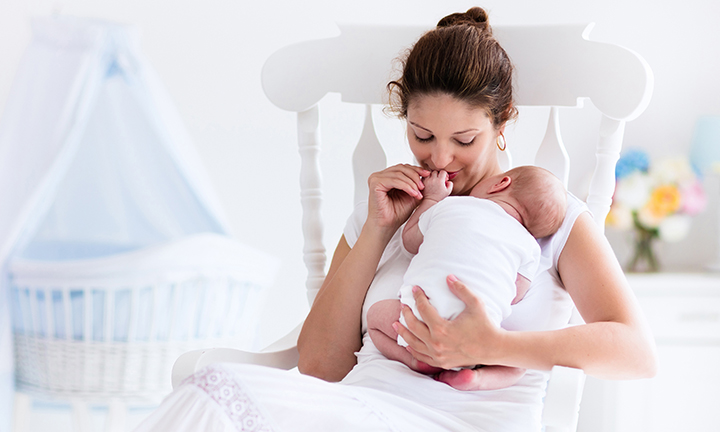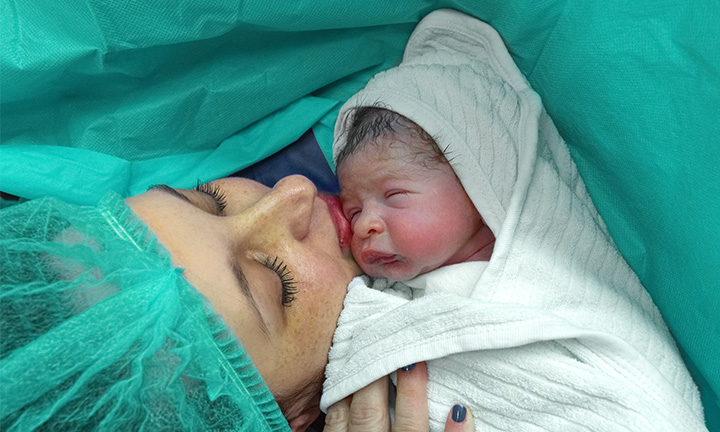
Post-Pregnancy Belly – Appearance, Recovery and Exercises
Key Takeaways
Bringing new life into the world is truly a miraculous experience – but it comes with its own set of challenges, not least of which is adjusting to your belly after childbirth. If you're looking at your tummy feeling a bit dismayed, know that you’re not alone – many new parents wonder about the changes in their bodies. While it’s natural to focus on your little one’s needs, it's equally important to care for your own physical and mental well-being. We’ll explore the science behind the belly after giving birth, offer some tips for managing your postpartum belly, and remind you that everyone’s post-pregnancy body is unique and beautiful in its own way.
What Your Post-Pregnancy Belly Might Look and Feel Like
After childbirth, it's common to notice that your tummy doesn't immediately go back to its pre-pregnancy shape. This is completely normal. In the beginning, your abdomen may feel softer and look rounder, resembling how it appeared in the early months of pregnancy. This is due to stretched muscles, loose skin, and residual bodily fluids that were present to support your baby during pregnancy.
If you've had a caesarean birth, you will have an abdominal incision on your belly. Your GP will provide advice on how to care for your caesarean section incision and scar, which will help the healing process.
Some individuals may experience diastasis recti after pregnancy. This condition occurs when the muscles of the rectus abdominis (the top layer of your abdominal muscles that are joined down the centre by connective tissue called the linea alba) separate during pregnancy and fail to return to their normal positions. If your GP diagnoses you with diastasis recti, they will discuss your treatment options with you or refer you to a physiotherapist.
If you feel like you still look and feel pregnant after giving birth, remember that this is normal. Everyone’s stomach post-birth looks different. Take it easy and be kind to yourself as your body recovers. Remember, it’s a journey, and every step forward is something to celebrate!
How Long Does it Take for the Uterus to Shrink?
Post-pregnancy, the uterus begins to contract and return to its pre-pregnancy size shortly after delivery. This process, known as ‘involution’, typically takes about six weeks. Each day, the uterus gradually shrinks and moves downward, repositioning itself behind the bladder.
During this period, you may experience contractions of the uterus. These contractions, often described as postpartum belly cramps or ‘afterbirth pains’, serve as a positive indicator of healing and a return to the pre-pregnancy size of the uterus.
Postpartum Belly Week-by-Week
The journey of the postpartum tummy varies from person to person in the weeks and months after childbirth. While the uterus typically shrinks back to its pre-pregnancy size within about six weeks, it may take longer for your body and belly to return to their pre-pregnancy state, while some may notice permanent changes to their body. Remember, your body has done amazing things growing your baby over the past 9 months – and now you have your little one to show for it. Here’s a general overview of the post-pregnancy belly progression week by week:
First Week Post-Pregnancy
Immediately after childbirth, the uterus begins to contract, a process known as ‘involution’. This helps reduce the size of the belly, but it remains prominent as the uterus is still enlarged and abdominal muscles are stretched. It's common for the tummy to look saggy and soft immediately after birth.
2 to 3 Weeks Post-Pregnancy Belly
During this period, the uterus continues to shrink, and you may notice a slight decrease in belly size. Breastfeeding can aid this process by releasing oxytocin, which promotes uterine contractions. Your tummy may start to tone up and return to shape over time, though this varies among individuals.
6 Weeks Post-Pregnancy Belly
By six weeks postpartum, the uterus has typically returned to its pre-pregnancy size, but, of course, the appearance and feel of your postpartum body and belly at 6 weeks can vary widely among new parents. The abdominal muscles begin to regain strength, but the belly may still appear soft. Gentle postnatal exercises can help tone stomach muscles during this time.
Up to 1 Year Post-Pregnancy Belly
A year into the postpartum period, you may notice significant changes in your body, including your stomach area, as you continue to recover after pregnancy and childbirth. The abdominal area may feel stronger, and the belly may appear flatter. Some people return to their pre-pregnancy weight, while others may find their stomach and body composition have permanently changed after pregnancy.
Recovery varies among individuals, but with consistent exercise and a healthy, balanced diet, you can support your ongoing recovery. However, it’s normal for the skin to retain some degree of looseness or for stretch marks to remain visible, as these are permanent changes for many.
Regaining your pre-pregnancy body is a unique journey for each parent, influenced by factors such as genetics, delivery method, diet, exercise and overall lifestyle.
How to Reduce Belly Fat Post-Pregnancy – Exercises and Nutrition Tips
Recovering physically and returning to your pre-pregnancy fitness levels is a gradual process that requires patience and self-care. By combining exercise with healthy eating, you can slowly regain your energy and work towards getting your body back to where you want it to be. Here are some tips on how to help lose your post-pregnancy belly and effective ways to support your recovery:
Post-Pregnancy Belly Exercises
Before you start your postpartum exercise routine, talk to your GP and wait until they give you the green light. Once you receive approval, try to stay active for at least 20 to 30 minutes daily. Remember to listen to your body and be gentle and patient with yourself.
Post-pregnancy yoga. Yoga helps to strengthen the core and improve flexibility and mobility, while also having meditative benefits to help you feel calmer. There are often yoga classes available for new parents, so ask your local GP or other parents in your area.
Post-Pregnancy Belly Nutrition
As always, your GP and midwife are always on hand to provide post-pregnancy advice and tips. Consult with them if you want to lose weight or if you have any concerns or pain.
FAQS AT A GLANCE
The uterus usually takes about six weeks to return to its pre-pregnancy size through a process known as ‘involution’. This duration can vary slightly among individuals, with factors like breastfeeding influencing the timing.
The Bottom Line
The postpartum period involves significant physical and emotional changes and adjustments. Understanding the changes your body goes through and recognizing that recovery takes time can help you set realistic expectations and be compassionate with yourself. Remember, everyone’s experience is unique, and embracing your body’s pace of recovery is an essential step toward wellness and strength.
If you haven’t already, download our Pampers Club app to get rewards and discounts on all those nappies your little one is using.
How We Wrote This Article The information in this article is based on expert advice found in trusted medical and government sources, such as the National Health Service (NHS). You can find a full list of sources used for this article below. The content on this page should not replace professional medical advice. Always consult medical professionals for full diagnosis and treatment.
Read more about Newborn Baby
Related Articles
Join Pampers Club and get:






